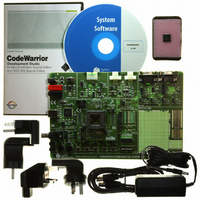EVB9S08DZ60 Freescale Semiconductor, EVB9S08DZ60 Datasheet - Page 71

EVB9S08DZ60
Manufacturer Part Number
EVB9S08DZ60
Description
BOARD EVAL FOR 9S08DZ60
Manufacturer
Freescale Semiconductor
Type
MCUr
Datasheets
1.DEMO9S08DZ60.pdf
(416 pages)
2.EVB9S08DZ60.pdf
(2 pages)
3.EVB9S08DZ60.pdf
(32 pages)
4.EVB9S08DZ60.pdf
(13 pages)
5.EVB9S08DZ60.pdf
(4 pages)
Specifications of EVB9S08DZ60
Contents
Module and Misc Hardware
Processor To Be Evaluated
S08D
Data Bus Width
8 bit
Interface Type
RS-232, USB
Silicon Manufacturer
Freescale
Core Architecture
HCS08
Core Sub-architecture
HCS08
Silicon Core Number
MC9S08
Silicon Family Name
S08D
Kit Contents
Board Cables CD Power Supply
Rohs Compliant
Yes
For Use With/related Products
MC9S08DZ60
Lead Free Status / RoHS Status
Lead free / RoHS Compliant
Available stocks
Company
Part Number
Manufacturer
Quantity
Price
Company:
Part Number:
EVB9S08DZ60
Manufacturer:
TI
Quantity:
101
- DEMO9S08DZ60 PDF datasheet
- EVB9S08DZ60 PDF datasheet #2
- EVB9S08DZ60 PDF datasheet #3
- EVB9S08DZ60 PDF datasheet #4
- EVB9S08DZ60 PDF datasheet #5
- Current page: 71 of 416
- Download datasheet (5Mb)
5.5
Interrupts provide a way to save the current CPU status and registers, execute an interrupt service routine
(ISR), and then restore the CPU status so processing resumes where it left off before the interrupt. Other
than the software interrupt (SWI), which is a program instruction, interrupts are caused by hardware events
such as an edge on the IRQ pin or a timer-overflow event. The debug module can also generate an SWI
under certain circumstances.
If an event occurs in an enabled interrupt source, an associated read-only status flag will become set. The
CPU will not respond unless the local interrupt enable is a 1 to enable the interrupt and the I bit in the CCR
is 0 to allow interrupts. The global interrupt mask (I bit) in the CCR is initially set after reset which
prevents all maskable interrupt sources. The user program initializes the stack pointer and performs other
system setup before clearing the I bit to allow the CPU to respond to interrupts.
When the CPU receives a qualified interrupt request, it completes the current instruction before responding
to the interrupt. The interrupt sequence obeys the same cycle-by-cycle sequence as the SWI instruction and
consists of:
While the CPU is responding to the interrupt, the I bit is automatically set to avoid the possibility of another
interrupt interrupting the ISR itself (this is called nesting of interrupts). Normally, the I bit is restored to 0
when the CCR is restored from the value stacked on entry to the ISR. In rare cases, the I bit can be cleared
inside an ISR (after clearing the status flag that generated the interrupt) so that other interrupts can be
serviced without waiting for the first service routine to finish. This practice is not recommended for anyone
other than the most experienced programmers because it can lead to subtle program errors that are difficult
to debug.
The interrupt service routine ends with a return-from-interrupt (RTI) instruction which restores the CCR,
A, X, and PC registers to their pre-interrupt values by reading the previously saved information from the
stack.
If more than one interrupt is pending when the I bit is cleared, the highest priority source is serviced first
(see
Freescale Semiconductor
•
•
•
•
Table
Saving the CPU registers on the stack
Setting the I bit in the CCR to mask further interrupts
Fetching the interrupt vector for the highest-priority interrupt that is currently pending
Filling the instruction queue with the first three bytes of program information starting from the
address fetched from the interrupt vector locations
Interrupts
5-1).
For compatibility with M68HC08 devices, the H register is not
automatically saved and restored. It is good programming practice to push
H onto the stack at the start of the interrupt service routine (ISR) and restore
it immediately before the RTI that is used to return from the ISR.
MC9S08DZ60 Series Data Sheet, Rev. 4
NOTE
Chapter 5 Resets, Interrupts, and General System Control
71
Related parts for EVB9S08DZ60
Image
Part Number
Description
Manufacturer
Datasheet
Request
R
Part Number:
Description:
Manufacturer:
Freescale Semiconductor, Inc
Datasheet:
Part Number:
Description:
Manufacturer:
Freescale Semiconductor, Inc
Datasheet:
Part Number:
Description:
Manufacturer:
Freescale Semiconductor, Inc
Datasheet:
Part Number:
Description:
Manufacturer:
Freescale Semiconductor, Inc
Datasheet:
Part Number:
Description:
Manufacturer:
Freescale Semiconductor, Inc
Datasheet:
Part Number:
Description:
Manufacturer:
Freescale Semiconductor, Inc
Datasheet:
Part Number:
Description:
Manufacturer:
Freescale Semiconductor, Inc
Datasheet:
Part Number:
Description:
Manufacturer:
Freescale Semiconductor, Inc
Datasheet:
Part Number:
Description:
Manufacturer:
Freescale Semiconductor, Inc
Datasheet:
Part Number:
Description:
Manufacturer:
Freescale Semiconductor, Inc
Datasheet:
Part Number:
Description:
Manufacturer:
Freescale Semiconductor, Inc
Datasheet:
Part Number:
Description:
Manufacturer:
Freescale Semiconductor, Inc
Datasheet:
Part Number:
Description:
Manufacturer:
Freescale Semiconductor, Inc
Datasheet:
Part Number:
Description:
Manufacturer:
Freescale Semiconductor, Inc
Datasheet:
Part Number:
Description:
Manufacturer:
Freescale Semiconductor, Inc
Datasheet:











